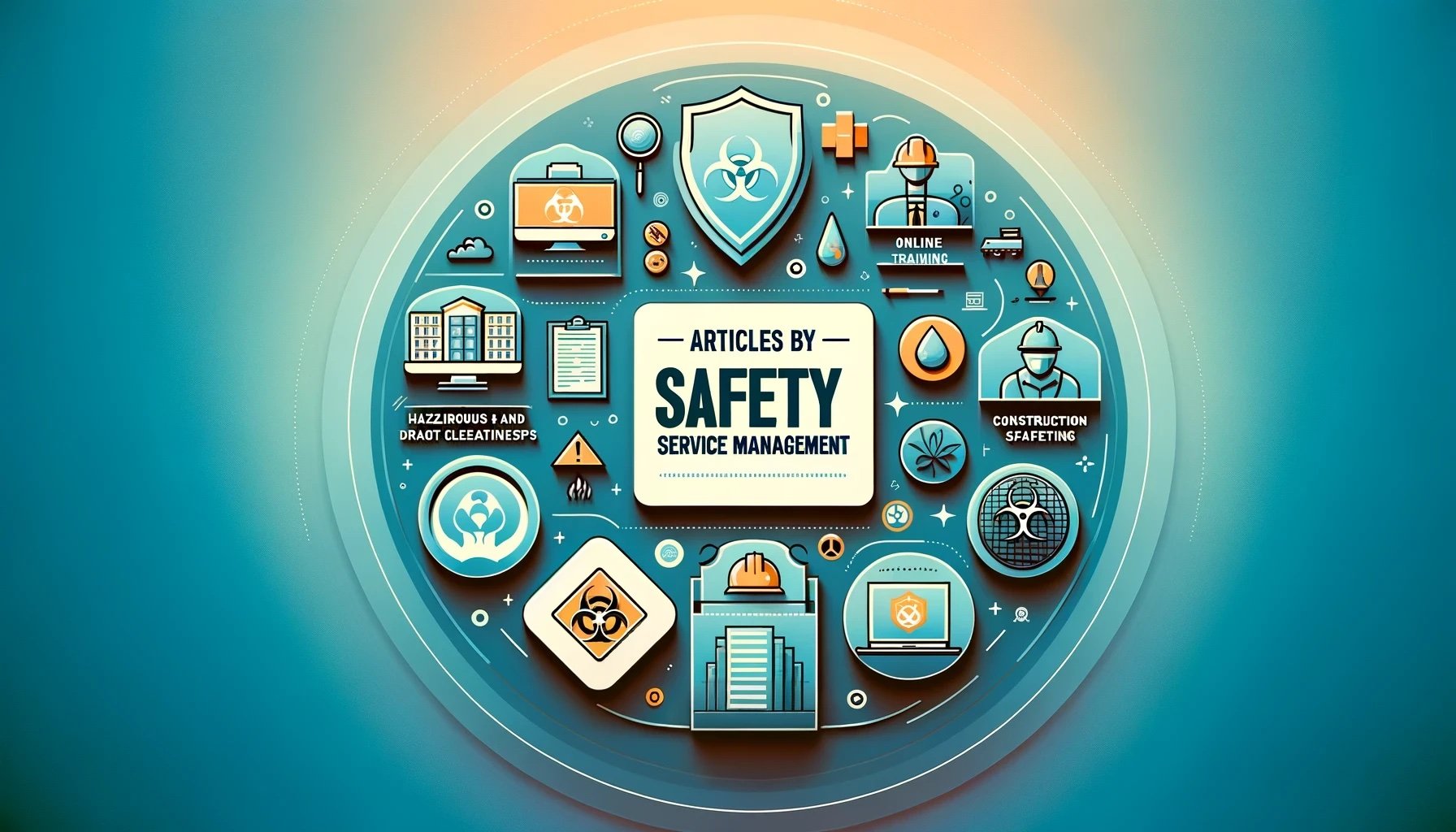
Importance of Fentanyl Awareness & Illicit Drug Awareness Courses for Hotel Staff
Hotel staff, from cleaners to security personnel, are pivotal in ensuring the safety and well-being of guests. Illicit drug awareness training is crucial for recognizing drug activity signs, enhancing guest safety, and promoting a secure environment. Through these classes, staff learn to identify drug use indicators and handle drug-related incidents professionally, reducing risks to personnel and property. Additionally, such training reinforces the hotel's commitment to a drug-free environment and compliance with legal regulations, safeguarding both guests and the hotel's reputation. This proactive approach in substance abuse awareness is essential for maintaining a positive guest experience and mitigating potential legal liabilities.
Hotels are being a hot spot for illicit drug activity so training hotel how to recognize illicit drug activity can play a critical role in ensuring the safety, security and well being of guests and fellow employees. Here are several reasons why it is important for hotel staff to undergo illicit drug awareness classes:
Recognizing Signs of Drug Activity: Illicit drug awareness classes provide valuable training on identifying signs of drug use and contaminated sites within hotel premises. This includes recognizing paraphernalia, unusual behavior patterns, and physical symptoms associated with drug consumption. By being observant, hotel staff can help prevent accidental second hand exposures.
Enhancing Guest Safety: Guests staying at hotels expect a safe and secure environment during their stay. Awareness of illicit drug related issues enables hotel staff to proactively address any potential threats to guest safety, such as drug overdoses, disturbances caused by intoxicated individuals, or the presence of illegal substances in guest rooms. This proactive approach helps maintain the reputation of the hotel and ensures a positive guest experience.
Protecting Staff and Property: Illicit drug activities can pose risks to the safety of hotel employees and the security of hotel property. Training staff on how to handle situations & having policies and procedures in place involving drug-related incidents, such as discovering drug paraphernalia, helps minimize potential harm to both personnel and assets.
Promoting a Drug-Free Environment: Hotels have a responsibility to maintain a drug-free environment for guests and employees. Illicit drug awareness classes instill a sense of responsibility among staff members to uphold the hotel's policies and procedures related to substance abuse and illegal activities.
Compliance with Regulations: In many jurisdictions, hotels are subject to regulations and laws related to drug control and substance abuse prevention.
The Importance of Providing Narcan to Hotel Staff
In addition to illicit drug awareness classes, providing hotel staff with Narcan (naloxone), a medication used to reverse opioid overdoses, is a crucial step for addressing potential drug-related emergencies within hotel premises. Here's why it's essential to equip hotel staff with Narcan:
Life-Saving Intervention: Opioid overdoses can occur unexpectedly and can quickly become life-threatening. By providing Narcan to hotel staff, they are empowered to intervene promptly in the event of an opioid overdose, potentially saving the life of the affected individual until emergency medical services arrive. Quick administration of Narcan can reverse the effects of opioids, restoring normal breathing and consciousness.
Rapid Response to Emergencies: In situations where guests or visitors experience opioid overdoses within the hotel, immediate access to Narcan enables staff to respond effectively and decisively. Time is of the essence during overdose incidents, and having Narcan readily available increases the chances of a positive outcome and reducing the risk of fatalities.
Enhancing Guest Safety and Well-being: Providing Narcan demonstrates a commitment to guest safety and well-being. Guests staying at hotels may be at risk of opioid overdoses due to various factors, including substance abuse disorders, prescription medication misuse, or accidental ingestion of opioids. By equipping staff with Narcan, hotels can offer an additional layer of protection and support for guests in distress, reinforcing their duty of care responsibilities.
Mitigating Legal and Repetitional Risks: In the event of an opioid overdose occurring on hotel premises, the timely administration of Narcan can mitigate legal liabilities and potential repetitional damage. Hotels that demonstrate preparedness and proactive measures to address drug related emergencies are better equipped to handle crisis situations and uphold their duty to provide a safe and secure environment for guests.
Enabling Staff to Respond Effectively: Training hotel staff in the proper policies and procedures as well as the use of Narcan empowers them to respond confidently and competently to opioid overdose emergencies. Staff members learn how to recognize the signs of an overdose, administer Narcan safely, and provide supportive care until emergency medical services arrive. This training instills a sense of readiness and competence among staff.
Contributing to Community Health Initiatives: Equipping hotel staff with Narcan aligns with broader community health initiatives aimed at reducing opioid-related harm and fatalities. Hotels serve as important hubs within communities, and by providing Narcan to staff, they participate actively in efforts to combat the opioid epidemic and promote public health and safety.
It is now apparent; fentanyl is not going anywhere which is why we need to look at this growing hazard for all who may come into contact with illicit drugs. Fentanyl & Illicit Drug Awareness courses for hotel staff are essential for promoting a safe environment within the hospitality industry. If we take the time to provide the hospitatlity industry the proper training, it will allow hotels to uphold their commitment to guest safety, protect their employees and property, contribute to the overall well being of the community and help mitigate potential liabilities that may occur as a result of an overdose or fatality.
Fentanyl Awareness Training for Hotel Staff
We are excited to announce the launch of the first and only fentanyl awareness program designed to protect employees working in the hospitality industry from accidental secondhand exposure. Illicit Fentanyl is a synthetic opioid that is 50-100 times more potent than morphine and has been responsible for a significant increase in overdose deaths in recent years.
Our program is designed to educate employees working in environments who may come into contact with fentanyl.
Safety Services Management is excited to announce the launch of the first and only fentanyl awareness program designed to protect employees working in the hospitality industry from accidental secondhand exposure.
Illicit Fentanyl is a synthetic opioid that is 50-100 times more potent than morphine and has been responsible for a significant increase in overdose deaths in recent years.
Our program is designed to educate employees working in environments who may come into contact with fentanyl.
Raising awareness about the dangers of fentanyl is a joint effort between public health, non-profit, and law enforcement partners, and is supported by the Drug Enforcement Agency (DEA).
The DEA recognizes the importance of fentanyl awareness and has joined forces with “Song for Charlie” to recognize the first-ever National Fentanyl Awareness Day for current or potential users. This day is an effort to educate individuals around the dangerous threat that fentanyl poses and to save lives.
The Purpose of the Program
The purpose of the Safety Services Management Fentanyl Awareness Program is to increase awareness and decrease fentanyl exposures in the work environment. In Northern California, a housekeeper unknowingly cleaned a room that was contaminated with fentanyl. Within minutes while vacuuming a contaminated area, she died leaving two young kids behind.
Safety Services Management’s online training goal is to educate cleaning staff on the hazards of fentanyl and how to identify a dangerous situation to stop these types of tragic events from reoccurring. The training also has a supervisor course which provides management the resources and tools they need to manage a fentanyl incident.
The Facing Fentanyl group has established a National Fentanyl Awareness Day on May 9th, to acknowledge the devastation caused by fentanyl poisoning and to remember loved ones lost to this deadly drug. To help spread the word about the dangers of fentanyl, Safety Services Management is releasing this unique training on May 9th for free to the first 500 registered students. To pre-register, please click here.
Essential Knowledge
You may be aware of the dangers posed by fentanyl, but do you know what to do if you come into contact with it?
With our fentanyl awareness training, you'll be equipped with the knowledge you need to protect yourself and those around you. In less than two hours, we'll teach you and your staff how to recognize the signs of a room that may be contaminated with fentanyl, steps to take to protect yourself, co-workers and guests as well as how to manage a fentanyl cleanup incident.
Our fentanyl awareness training provides the essential knowledge you and your staff need to stay safe. Call us now to schedule a no-cost evaluation consultation and learn how Safety Services Management can help hotels prepare for this lethal chemical contaminating our nation.
Start Training Today
Call or sign up by clicking the link below today to learn how this powerful training program, created by first responders and industry experts will help keep hotel staff and guests safe.
Our online courses bring awareness, provides a plan on how to manage a fentanyl incident as well as how to clean up a low risk situation. Our advanced in-person training provides the training needed to safely complete a high risk fentanyl cleanup which follows the EPA’s Guidelines for Methamphetamine and Fentanyl Laboratory Cleanup.
To register for this training on how to keep hotel staff and guests safe from the dangers of fentanyl, click here.
Contact Information
Safety Services Management
(714) 455-9832
Atmospheric Hazards within a Confined Space
An incident last November 2021 caused the life of a 35-year-old worker. The worker lost consciousness after descending into a regenerator overflow well at the Benicia refinery to evaluate the condition of the well interior and perform cleaning operations in advance of a welding crew.
Atmospheric hazards within a confined space are the leading cause of entrant fatalities. As we know, workers working inside of a confined space will often experience restrictions in movement, have only one way in and out, and working in an environment that isn’t meant for continuous occupancy.
Let’s review the deadly killer, atmospheric hazards which are often odorless gasses that can sneak up on an entrant without them knowing it.
An incident last November 2021 caused the life of a 35-year-old worker. The worker lost consciousness after descending into a regenerator overflow well at the Benicia refinery to evaluate the condition of the well interior and perform cleaning operations in advance of a welding crew.
He was discovered within the regenerator, equipped with fall protection, and retrieved by a refinery emergency rescue crew. He received on-site medical attention from the Benicia Fire Department and the Valero Refinery Fire Department, but they were unable to revive him.
The culprit is the odorless gas argon, which was leaking from a welding torch left in the well and replaced the oxygen inside the space.
Argon in an open atmosphere is not extremely dangerous as its placard rating for Health is 1, Flammability is 0, and Reactivity is 0. When used within a confined space, everything changes as it will replace the oxygen which can drop to deadly levels as we see from the above example.
Common Toxic Gases
Toxic gases can be created by items that are purposefully utilized or stored in confined spaces, by natural processes, mistakenly introduced into the space, or, in the case of sewers and big, linked systems, make their way into the area being worked on.
In a confined space this may include harmful materials due to the type of manufacturing method used, the biological and chemical "breakdown" of the product being stored in a tank, maintenance activities (such as welding) carried out in the confined area, and other factors.
Common types of toxic gases encountered in confined spaces are:
Hydrogen Sulfide - "Sewer gas" is a colorless gas with a rotten egg smell. Numerous fatalities in restricted spaces have been connected to excessive exposure. Because hydrogen sulfide impairs our ability to smell, some people may believe that the gas has left the area. Asphyxiation is brought on by hydrogen sulfide, which prevents the exchange of oxygen at the cellular level.
Carbon monoxide - is produced when carbon-based fuels are burned, and it has no scent or color (gas, wood). The body's ability to distribute oxygen to every region of the body is hindered by carbon monoxide.
Solvents - many solvents, including kerosene, gasoline, paint removers, degreasers, etc., are not only flammable but can also have negative effects on the central nervous system (CNS) if inhaled in high quantities. Dizziness, drowsiness, lack of focus, disorientation, headaches, coma, and death are examples of CNS effects.
Many workplaces have hazards related to confined spaces. Employers are required to recognize and label confined spaces, create and maintain emergency response plans for the workplace, and train employees and supervisors.
How to Protect Entrants
The solution is for the most part simple but often not followed or not followed correctly. That solution is to test the atmosphere before and during entry. If you or your crew do not know how to properly test a space or use the atmospheric monitor that is provided to you then learn it! Learn how to test the different stratospheres.
Fentanyl - The Untold Story
While deaths of fentanyl users increasingly make the headline news, rarely if ever are there the untold stories of those responsible for decontaminating a property to make it fully safe and habitable.
The Ramifications of Fentanyl Beyond the Death of a User
In early April, the Orange County District Attorney’s Office in Southern California, filed felony charges against two drug dealers in the largest bust in the county in 16 years. On March 17, Buena Vista police officers stopped the pair outside a home as they were driving away in a minivan. It was packed with 822 pounds of meth, 89.7 pounds of cocaine, and the biggest killer of them all, 20.5 pounds of illicit fentanyl pills destined to be sold as counterfeit opioids or likely crushed and cut into cocaine, meth, or heroine.
The District Attorney estimated that given the lethal dose of fentanyl—a minuscule 2 milligrams—the haul had the potential to kill 4.7 million people. “Fentanyl is cheap, is easy to get and it is killing our children, our coworkers and tens of thousands of innocent Americans,” says County District Attorney Todd Spitzer in a press release on the matter. He urges caution: “Millions of unsuspecting people have the grim reaper looking over their shoulder, and they have no idea how close they actually are to dying from taking a single pill.”
An additional concern when dealing with fentanyl is the accidental exposure by an innocent bystander. This is rare but does occur even though groups who are pro-legalizing illicit drugs will say otherwise. The reality is, illicit fentanyl like the analog carfentanil is approximately 100 times more potent than pharmaceutical grade fentanyl and 10,000 times more potent than morphine. Individuals who have not built up a tolerance and accidentally inhales or ingests this illicit drug can be fatal.
While deaths of fentanyl users increasingly make the headline news, rarely if ever are there the untold stories of those responsible for decontaminating a property to make it fully safe and habitable.
A Dunk in the Deep End
In 2020, Greg Gleeson, who co-owns 200 units in Southern California with his brother, gets disturbing news from their property manager. He calls to inform Gleeson that the San Bernardino County Fire Department red tagged one of their rental units where two people overdosed and a third victim was in the hospital.
Gleeson rushes to the scene and is shocked by what he finds.
“There were people in hazmat suits,” he says. “I thought, was somebody there using nuclear material and making bombs or something?”
In essence his rental unit morphed into a hazardous waste site.
“The police told me that these guys were cutting illicit fentanyl pills in the apartment,“ he says. “They probably inhaled the fentanyl powder, and it killed them. That’s when I discovered that a small amount of fentanyl like a grain of salt could be lethal.”
That was only the beginning of Gleeson’s nightmare, or, as he describes it, his “dunk in the deep end.” The property was impounded and red tagged by the fire department. It was determined that it needed a complete remediation by a professional crew before the unit could be deemed safe and habitable.
Northern California Twin Deaths
On June 7, 2019, a victim of fentanyl poisoning is found seated in front of a TV with the remote still in-hand in his 2,800-square-foot residence in Northern California. The potent dose of the illicit opioid hit this victim so fast he had no time to call for help as his life came to a tragic end.
Local police and the Coroner’s Office examine the death site. After a brief inspection, they conclude it was a run-of-the-mill overdose or cardiac arrest. No crime was involved. Case closed. The autopsy was minimal, and the lab tests were sent to a testing site in Pennsylvania, but the results were not readily available.
A week after his death, the case is reopened after an unsuspecting house cleaner loses her life while vacuuming the site where he died. It was later discovered that fentanyl was the source of the original overdose as well as the cause of death of the house cleaner.
After the home is red tagged by local authorities, testing begins by a Certified Industrial Hygienist which shows that traces of fentanyl is found throughout the home.
Two weeks after the house cleaner’s death, lawsuits against various parties are filed. A trust company, which represents the owner of the property, hires lawyer Mac Prout from the Borton Petrini law firm.
“I’ve been involved in cases for more than four decades, but I’ve never encountered one as tragic as this,” says Prout, explaining that lawsuits are still in litigation. “It has affected the recreational drug user’s entire family as well as the deceased house cleaner, whose two young girls lost their mother. It’s an unadulterated case of the beast of addiction. Top to bottom, this was incredibly senseless.”
The Untold Story
These narratives are only two examples of thousands of casualties from the ruinous fentanyl epidemic sweeping our nation.
The heart-wrenching stories of how heroin, cocaine and opioid addiction take lives and devastate those in the wake of overdoses are all too familiar. But as shown in both these California communities, today users and law enforcement across the country are grappling with an unprecedented crisis fueled by a lesser known but even more lethal substance: synthetic fentanyl. Largely manufactured in Mexican labs from chemicals imported from China, fentanyl is smuggled across the U.S. border and sold on the black market for enormous profit.
While overdoses make headline news, what’s blatantly overlooked and unreported is the consequences of overdoses do not end merely with a user’s death. The untold story: When a person has engaged in illicit fentanyl use the site may have turned into a hazardous waste site. Inhaling or ingesting a small amount of the drug can be deadly. The ramifications impact all who come in contact with the property—from first responders to those tasked with cleaning up, and at worse, those who are not aware of the hazard such as family members or even a hotel guest enjoying a relaxing vacation.
Federal Drug Enforcement Weighs In
In September 2021, the Drug Enforcement Administration weighed in on the fentanyl epidemic with a Public Safety Alert. “The United States is facing an unprecedented crisis of overdose deaths fueled by illegally manufactured fentanyl and methamphetamine,” says Anne Milgram, DEA administrator. “Counterfeit pills that contain these dangerous and extremely addictive drugs are more lethal and more accessible than ever before.”
At that point in time, more than 9.5 million counterfeit pills were seized in 2021—more than the past two years combined—with a dramatic rise in the pills packed with the lethal dose of 2 milligrams of fentanyl, according to the DEA. Two out of every five pills with fentanyl contain a potentially deadly dose—small enough to fit on the tip of a pencil.
Up to 50 times more powerful than heroin, pharmaceutical fentanyl began with noble intentions. It was first developed in 1959 by Paul Janssen, a Belgian doctor and pharmacologist, as an intravenous pain treatment for cancer patients. It was certified for palliative care by the FDA in 1968.
DEA Museum Presents: “American Crisis:Fentanyl & Fake Pills”
Based on a recent analysis of Centers for Disease Control data, fentanyl has become the predominant killer for Americans ages 18 to 45. In the past two years, deaths from fentanyl have considerably exceeded deaths from COVID-19 for this age group. Recently, the United States Centers for Disease Control and Prevention reported more than 93,000 people died of a drug overdose in the U.S. in 2020, an increase of 30 percent from the previous year. It blames the rise on the increased use of fentanyl sold on the streets. In an updated report, the agency said that more than 100,000 had died in a 12-month period ending in April, mostly attributed to fentanyl use. Drug researchers say that that number will rise every month.
Eager to make a greater profit, dealers lace commonly known drugs such as heroin and cocaine with fentanyl. This often results in a lethal cocktail for unsuspecting buyers. Those who fall prey include recreational users seeking a cheap and powerful euphoric high and addicts desperately looking for a less expensive alternative to legal, FDA-approved fentanyl.
The FDA reports that there are thousands of illegal websites that peddle counterfeit drugs (Snapchat has been singled out for its ease in selling suspect online drugs). It’s a national disaster of epic proportion that spans all socio-economic backgrounds and ages and increasingly infiltrates all regions of the country.
In October 2021, the DEA announced at a press conference that within the previous eight weeks it arrested 810 traffickers in the criminal drug distribution networks across the U.S.
Deputy Attorney General Lisa O. Monaco says, “The pervasiveness of these illicit drugs, and the fatal overdoses that too often result, is a problem that cuts across America from small towns to big cities and everything in between.”
“The fentanyl-laced fake pills seized by the DEA could potentially kill more than 700,000 Americans,” says Anne Milgram, administrator of the U.S. Drug Enforcement Administration. At the press conference she added, “I urge the American public today to talk to their loved ones about the threats and dangers of fake pills and the simple fact that one pill can kill.”
Today, many investigators point to the onset of Covid-19 pandemic when people increasingly bought drugs through the Darknet which had already become a lucrative drug-selling underground business. Much of the drug sales took place on social media platforms. Most of the fake pills were laced with fentanyl.
In 2021, the DEA helped to launch the massive 10-month Operation Dark HunTor that traced drug vendors running laboratories at home. They were creating illicit pills laced with fentanyl. In the U.S., the operation alone seized more than 200,000 counterfeit pills.
Hidden Dangers of a Fentanyl Cleanup
Cleaning up fentanyl at a contaminated property is a daunting challenge riddled with complex issues. Making a place safe again entails adhering to strict safety protocols, including testing, hiring a certified industrial hygienist and a qualified hazmat trained cleanup crew.
The most important factor is to hire a crew of professionals to make certain that the remediation is done safely. That’s the main challenge companies in the remediation business face.
In 2003, Joe Mazzuca and his wife Julie founded Meth Lab Cleanup Company with the intent to primarily clean up contaminated properties that were used as labs for manufacturing methamphetamine “meth” for the black market. (It’s estimated that there are still 2.5 million meth lab sites in the U.S.)
Since then, their Florida-based company has become the leader in cleaning thousands of sites contaminated by meth. In recent years, Mazzuca has seen a big shift in the illicit drug market.
“In the last 18 months, we’ve seen a huge trend of overdoses of meth users who were using drugs cut with fentanyl,” he says. “It’s a hazardous material. On most of the sites we service, there’s been a rise in deaths just from handling the drugs. It doesn’t take much to overdose. We test for both meth and fentanyl to make sure a space can safely be inhabited.”
Mazzura’s clean-up reputation has led him to train hazmat professionals around the world. Jon Schibsted, a former firefighter for Los Angeles, received extensive training from Mazzura to handle clandestine lab cleanups.
Schibsted founded Safety Services Management, LLC (SSM), a Southern California-based company that specializes in meth and fentanyl cleanups. His team was hired for both the San Bernardino and Northern California properties which we will later review.
Often times porous items need to be naturalized and then discarded to ensure hidden traces of fentanyl are removed.
“My primary objective is to educate property owners and inform them about the dangers of a site contaminated with fentanyl and how important it is to have it cleaned properly,” he says. “If property owners are blindsided by a fentanyl death and do not take the proper steps, others could be tragically exposed, rental incomes could be wiped out for months and lead them wide open to possible lawsuits.”
Schibsted notes that because fentanyl is such a cheap drug for mixing with other narcotics, its manufacturing reach is widespread. “This is the real danger,” he says. “It’s occurring in hotel rooms, apartments, houses, garages and storage facilities which can cause widespread contamination that the general population can be exposed to.”
When a local public health unit responds to a fentanyl fatality and determines that the property needs to be red tagged due to fentanyl contamination, all traces of fentanyl must be removed. This begins the nightmare for many property owners. Some agencies such as the San Bernardino County Fire Department give the owner a packet that includes the cleanup process and information about contractors approved to handle this specialized remediation. But oftentimes, the property owners are left on their own to find the appropriate resources.
“The cost is huge,” says Dwane Pianalto, a Southern California Registered Environmental Health Specialist (R.E.H.S). “Such a substantial cost for a hotel, for example, means loss of rental income. If a site is red tagged, the law states no further occupation is allowed until the remediation is completed. The whole process could easily take up to 90 or more days.”
Once a site has been red tagged due to fentanyl, a Preliminary Site Assessment is created by a trained professional such as a certified industrial hygienist. The hygienist takes samples of the site and provides recommendations on cleaning. “We prefer to work directly with the hygienist at the beginning of the process to ensure they sample the site to paint a clearer picture of what needs to be cleaned,” says Schibsted. “If it isn’t done correctly, it can lead to a much higher cleanup cost.”
SSM often uses certified industrial hygienist Joe McCaffrey in Southern California. “I started working on methamphetamine cases, but fentanyl cases are increasing,” he says. “Various surfaces inside the residence are sampled for fentanyl contaminants. Sampling usually includes walls, floors, furniture, appliances, HVAC systems and areas that appear to have been impacted by pill presses, smoking or drug cooking activities.” Those samples are then analyzed by an accredited lab that provides the results of contamination.
When fentanyl is in powder form, McCaffrey says, “I advise neutralizing the drug with a solution such as Decon7 or Dahlgen, an oxidation-based cleaner, then follow up by using a vacuum with HEPA filters to remove all the small particles. Then we test again to make sure the property is safe to reoccupy.”
Nightmare Remediation No. 1: San Bernardino
Crews preparing to make entry into Gleeson’s rental property.
Greg Gleeson calls his ordeal a nightmare. He had to move people out of adjoining units, which meant a hit in income for rentals. He then had issues with his property insurance company that rarely covers damages from drug abuse.
Gleeson hired Schibsted’s company to clean up the unit. “There were some other remediation companies, but I went with Jon’s company, Safety Services Management,” he says. “As a former firefighter, he knew exactly what the fire department required. They got the job done, but then there were delays on getting the unit remodeled to rent again. The whole process took over a year to complete. All said, it cost us a small fortune.”
As for his recommendations to other property owners, Gleeson says, “So much fentanyl is coming through Mexico, so Southern California is being hit hard. More is coming in, so be prepared. Check your insurance, have a rolodex of cleaning crews and be ready to hire one to fix the whole mess.”
Nightmare Remediation No. 2: Northern California
After the second death at the Northern California property, inspectors found an abundance of fentanyl residue throughout the house.
Built-in cabinets with darkened glass windows were discovered in the wall in the television room. Drawers in other rooms revealed more visible evidence of contamination.
Due to the tragic loss of two individuals over a 7-day period, the home was red tagged to only allow hazmat trained personnel to enter the property to ensure this tragedy doesn’t repeat.
This particular property was red tagged for a period of over two and a half years from the horrible events that started in June 2019. The lack of clear regulations when dealing with fentanyl contaminations has been a key contributing factor creating confusion on how to deal with these types of properties which can turn into a litigation nightmare.
Decontamination Process
Crews vitals are taken before, during and after they make entry into a fentanyl contaminated property.
“Safety is our highest priority,” Schibsted says. “We not only train our employees on how to remediate the site but also plan for the worst-case scenario. A worker can go down in a hazardous environment in seconds. I train my crew on how to rapidly extract an unconscious worker from a hazardous environment and how to provide life saving measures.”
At every step during the initial cleaning phase, the work is slow and dangerous.
Crews use decontamination solution to neutralize illicit fentanyl.
“We attack and neutralize the area known to have fentanyl which is often in a powder form,” Schibsted says. “When you first make entry into the site, it’s essential to avoid stirring up particles which could contaminate the workers and their equipment. The goal is to isolate the fentanyl to keep it from spreading, then begin the cleanup.”
Once the known contaminated areas are neutralized, SSM applies a low-pressure sprayer to spray areas of concern with a decontamination solution. Most porous items are discarded, and the valuable non-porous items are cleaned. Removing the decontamination solution is done by using a pressure nozzle and extractor to rinse the ceilings, walls and floors. Once all the surfaces are dry, the entire site is then vacuumed with a commercial grade HEPA vacuum. This process at may at times need to be repeated before all traces are removed.
“To ensure the place is safe to reoccupy, we run multiple tests which detect trace levels of fentanyl,” Schibsted says. “Depending on the level of original contamination, we will then have an industrial hygienist return and review our cleaning process and take post cleaning lab samples.”
Decontamination Challenges
The science is there, but state legislations have been notoriously slow to respond to the epidemic. Currently, California, is the only state that has established cleaning standards with a fentanyl detection level. It’s a start but nowhere near the 2007 federal Methamphetamine Remediation Research Act that established guidelines for meth lab cleanup in response to the addiction problem. For the most part, states have not addressed the fentanyl cleanup problem—even though fentanyl poses one of the greatest threats to public health.
In a more recent report in 2021, the EPA published a 64-page booklet “Voluntary Guidelines for Methamphetamine and Fentanyl Laboratory Cleanup.” These are “voluntary guidelines,” published by a governing agency that specializes in protecting the environment, not humans. The EPA got the ball rolling, but it’s disappointing that agencies that focus on protecting human health have not stepped up like the EPA to reduce the chance of a secondary exposure.
As might be gathered, fentanyl cleanup can be enormously expensive which could potentially lead to cutting corners in full remediation. In St. Louis, Missouri, a rental car was being used to transfer drugs. One bag containing fentanyl ripped open in the trunk. The company called a decontamination company which quoted $30,000 to complete the cleanup. Because there were no cleanup requirements by law in Missouri, the rental car company cleaned the car itself. The price was less costly but easily could have put the workers and future renters in grave danger at the cost of rental car profits.
With a policy vacuum on the safety dangers of illicit fentanyl, the public’s safety is at risk for all people in all states. The owners of properties could be sued if a future resident succumbed to a fentanyl exposure that wasn’t properly remediated.
Crews and their equipment are decontaminated as they exit the property to eliminate accidental spreading of illicit fentanyl.
In August 2021, eight people overdosed on fentanyl cut into cocaine in small North Fork towns in the seaside East End of Long Island 100 miles away from New York City. Six died, two were hospitalized. They were all recreational users. In a New York Times news report, Timothy D. Sims, the district attorney of Suffolk County where 3,000 people have died of overdoses in the last decade, said that there had been pressures of shortages on the market which affected drug dealers. “All the while we have seen demands skyrocketing from users because of the impact the pandemic has had on them.”
The North Fork headlines were of course atrocious, but again nothing was written about the remediation of properties contaminated by fentanyl. Two dealers in Suffolk County were arrested—Lavain Creighton from Greenport, Justin Smith from Smithtown. They will be put on trial for their responsibility of these deaths and could well face a manslaughter conviction but there has been no news on the cleanup work by the narcotics division not only where the dealing occurred but also in the towns where deaths took place.
Several calls to the Suffolk County officials were not returned. Too busy? Or were those in charge unwilling to speak on the record about the issue of cleanup? Like more than twenty states in the nation, New York doesn’t regulate illicit drug cleanups. So, it’s a jump ball with the unsuspecting public most at risk from traces of fentanyl’s deadly pollution.
The pandemic could well have taken a detrimental role in the social climate that triggered the rise of using poisoned pills. Isolation, depression, fear can all play into a drug addiction.
Schibsted concludes, “My hope is that we can get the word out about how dangerous illicit fentanyl is to not only the user, but everyone that may accidentally come into contact with this deadly drug.”
Epidemic Within the Pandemic
In a November 2021 update, the U.S. Centers for Disease Control and Prevention reported that more than 100,000 people died from overdoses in a 12-month period ending in April—the biggest increase ever seen in the U.S. The culprit? Fentanyl, which was the factor in 60 percent of the fatal overdoses. That represented a massive 50 percent increase in a single year.
Killer Counterfeit Pills
In a November 2021 update, the U.S. Centers for Disease Control and Prevention reported that more than 100,000 people died from overdoses in a 12-month period ending in April—the biggest increase ever seen in the U.S. The culprit? Fentanyl, which was the factor in 60 percent of the fatal overdoses. That represented a massive 50 percent increase in a single year.
The headline in the November 23, 2021 U.S. edition of the London-based newspaper The Guardian reads: “It’s devastating: how fentanyl is unfolding as one of America’s greatest tragedies.” Writer Melody Schreiber quotes Nora Volkow, the director of the Natural Institute on Drug Abuse, as saying, “It’s an epidemic within the pandemic…what we didn’t expect was that during that period there [would] be a massive increase in the entry of these illicit substances into the country.”
The narrative of the article opened with 13-year-old Lucas Manual. In August 2020, after six months of remote learning, he was excited to become an eighth grader at his school in Redding, California, home. He wanted to be at his best, but Manual was still suffering mouth pain from a root canal performed on him a week earlier. Rather than seek help from a pharmacy, he logged onto Snapchat and sought to get marijuana to relieve the pain. A dealer replied and said he had something better: Percocet.
Shortly after he received his pain-free pills in the mail, Manual popped his first dose while playing a video game. He was dead within minutes of overdosing. An investigation found that the pill was a counterfeit that had been cut with fentanyl.
Manual’s case is not unique in our society. There’s a higher chance today for a lethal fentanyl hit. Even people who are not addicted to opioids but occasionally take drugs for a recreational high are susceptible to die from one miniscule encounter with the illicit drug.
Daniel Ciccarone, the Justine Miner endowed professor of addiction medicine at the University of California, San Francisco, told the Guardian, “The trajectory is up, with no leveling off. There’s nothing that says it’s slowing down. Counterfeit pills are a big part of the story. They look all the world like the real thing.”
There are some solutions to these F-bomb surprises, including the recently developed inexpensive test strips that can detect the presence of fentanyl cut into other drugs, from opioid pain pills to cocaine. And if there is a fentanyl overdose, the naloxone medication can rapidly reverse the effects. However, the med’s price has increased this year and that has led to an alarming shortage.
Brice Harrath shares his story of overdosing on opioids and being administered a life-saving dose of naloxone. He encourages others to be trained to use the medication in the event of the overdose of a friend or family member.
This remains one of our country’s greatest health cataclysms. As Covid-19 deaths rise toward 800,000 people in the U.S., the fentanyl contagion fatalities certainly pales in comparison. But as the drug agencies and health workers agree, the toll of the drug and its contamination of innocent bystanders is on a wildfire path of destruction. Where will it end?
Perhaps in the matter of justice. To close Manual’s story, justice has been at least partially served. Detectives investigating his death have charged the dealer who sold the youngster the deadly drug with murder.
And another positive: Manual’s mother, Amanda Faith Eubanks, has created a support group for families whose children have encountered a similar fate at the claws of fentanyl.
Author Information
Dan Ouellette is a free-lance journalist and author who has covered a range of topics in his decades long career based in San Francisco and since 1999 a resident of New York City. In California he reported on such stories as the dire work at Oakland’s Highland Hospital Emergency Room and how the building of a jazz club in Oakland helped the city resurrect a district that had been neglected. He also wrote about the cultural history of the Volkswagen Beetle that grew into a book on its history, its social impact and its new life as the New Beetle in 1998 (The Volkswagen Beetle Book). In New York, Ouellette largely turned his attention to the jazz scene of the city and international festivals. He was a writer, editor and teacher at City College. He wrote two biographies, Ron Carter: Finding the Right Notes (a story about jazz’s greatest bass player), and Bruce Lundvall: Playing by Ear (about the one of the music industry’s most brilliant ears for signing star artists ranging from Herbie Hancock to Norah Jones). In addition to contributing to different magazines and online publications, Ouellette produces a monthly music column, Jazz & Beyond Intel, on his website: danouellette.net. He can be reached at danouell33@gmail.com.
Fentanyl - Chemical Weapons Attack
The word is only slowly getting out in media circles about the dangers of illicit fentanyl trafficking.
In the 2019 The New York Times Magazine story “The China Connection: How a DEA Agent Cracked a Global Fentanyl Ring,” author Alex W. Palmer wrote: “A kilogram of fentanyl, purchased for only a few thousand dollars, can be mixed with heroin and made into a couple million dollars’ worth of pills. By contrast, a kilogram of undiluted heroin nets less than $80,000 in profit.”
Dangers of illicit fentanyl Trafficking
The word is only slowly getting out in media circles about the dangers of illicit fentanyl trafficking.
In the 2019 The New York Times Magazine story “The China Connection: How a DEA Agent Cracked a Global Fentanyl Ring,” author Alex W. Palmer wrote: “A kilogram of fentanyl, purchased for only a few thousand dollars, can be mixed with heroin and made into a couple million dollars’ worth of pills. By contrast, a kilogram of undiluted heroin nets less than $80,000 in profit.”
In a 2020 episode of the National Geographic Television documentary series Trafficked, intrepid journalist Mariana van Zeller traced the fentanyl pipeline that has produced the most devastating drug epidemic in U.S. history. She used anonymous and masked informants to take her a step at a time into the dangerous world of the Mexican drug cartels. Van Zeller and her team witnessed kegs of fentanyl dropped into the ocean off the Mexican coast from international container ships.
History of Fentanyl in America | Trafficked with Mariana van Zeller
They then followed the route the drug traffickers took to get the raw material to low-quality labs where the fake pills and powders were manufactured. The team then shadowed the delivery of the fentanyl through the border patrol after the smugglers coated the drug packages with coffee grinds, mustard and fabric softeners to successfully avoid detection of drug-sniffing patrol dogs.
On the Fox News Channel show Justice with Judge Jeanine, host Jeanine Pirro spoke with former DEA Special Agent Derek Maltz about drug trafficking. He said that fentanyl seizures by the Border Patrol in the El Paso Sector had increased 4,000 per cent since 2018. “In Orange County, it’s been reported that there’s been a 1,000 per cent increase since 2016,” he said. “Then there were 30 deaths a year. Now it’s over 4o0. This is a chemical weapons attack.”
Fox Justice with Jeanine with former DEA Special Agent in Charge Derek Maltz
Author Information
Dan Ouellette is a free-lance journalist and author who has covered a range of topics in his decades long career based in San Francisco and since 1999 a resident of New York City. In California he reported on such stories as the dire work at Oakland’s Highland Hospital Emergency Room and how the building of a jazz club in Oakland helped the city resurrect a district that had been neglected. He also wrote about the cultural history of the Volkswagen Beetle that grew into a book on its history, its social impact and its new life as the New Beetle in 1998 (The Volkswagen Beetle Book). In New York, Ouellette largely turned his attention to the jazz scene of the city and international festivals. He was a writer, editor and teacher at City College. He wrote two biographies, Ron Carter: Finding the Right Notes (a story about jazz’s greatest bass player), and Bruce Lundvall: Playing by Ear (about the one of the music industry’s most brilliant ears for signing star artists ranging from Herbie Hancock to Norah Jones). In addition to contributing to different magazines and online publications, Ouellette produces a monthly music column, Jazz & Beyond Intel, on his website: danouellette.net. He can be reached at danouell33@gmail.com.
THE UNTOLD STORY: REMEDIATING A TOXIC DRUG DWELLING FOR SAFE REENTRY
What people aren’t aware of is the tragic consequences of overdoses don’t end merely with a user’s death. Wherever a person has engaged in illicit fentanyl use, the dwelling may become a hazardous waste site. Even inhaling a speck of the drug can prove deadly.
THE UNTOLD STORY
The heart-wrenching stories of how heroin, cocaine and opioid addiction is taking lives and devastating those in the wake of overdoses are all too familiar. Today, users and law enforcers are grappling with an unprecedented crisis fueled by a lesser-known but even more lethal substance: synthetic fentanyl sold on the black market.
Up to 50 times more powerful than heroin, pharmaceutical fentanyl began with noble intentions. It was first developed in 1959 as an intravenous pain treatment. However, in the last decade, consumption of illicit fentanyl—smuggled to the U.S. from Mexican drug cartels and Chinese labs—ranks as one of the leading causes of death here, greater than fatalities caused by car crashes, HIV or gunshot wounds.
In September 2021, the Drug Enforcement Administration reported more than 93,000 people died of a drug overdose in the U.S. in 2020, an increase of 30 percent from the previous year. It blames the rise on the increased use of fentanyl sold on the streets. Illicit fentanyl can range from pharmaceutical fentanyl resold on the streets to illicit labs producing a variety of fentanyl analogs. Currently the most lethal analog is carfentanil, which is 10,000 times more potent than morphine and 100 times more potent than pharmaceutical fentanyl. It’s becoming a commonly recognized national disaster of epic proportion that spans all socio-economic backgrounds. However, addiction affects more than just its victims and those close to them.
The Untold Story for Hotel and Lodging Owners
What people aren’t aware of is the tragic consequences of overdoses don’t end merely with a user’s death. The untold story: wherever a person has engaged in illicit fentanyl use, the dwelling may have become a hazardous waste site. Even inhaling a speck of the drug can prove deadly. The ramifications impact all who come in contact with the property—from first responders to those tasked with cleaning up. At one site in Northern California, a house cleaner hired to clean a home died within minutes after coming into contact with fentanyl.
For those engaged in the hotel and lodging industry sector, the stakes are especially high. Education is key to keep cleaning staff and guests safe. There are a myriad of issues: testing by the local health governing agency, hiring certified industrial hygienists and workers skilled at hazardous cleanups and disposal. Insurance is also a factor to consider.
But what’s most important is to hire a crew of professionals to get the job done safely.
“If property owners are blindsided by a fentanyl death and do not take the correct steps, guests or employees could also be tragically exposed and lead them wide open to possible lawsuits.” says Jon Schibsted, owner of Safety Services Management (SSM), a Southern California-based company that specializes in fentanyl cleanup.
The Danger of Fentanyl
Schibsted notes that because fentanyl is a cheap drug for mixing with other narcotics, its reach is widespread. “Not only are drug dealers pressing their own pills, but they are also cutting illicit fentanyl into other drugs to increase their effect,” he says. “The danger is that this is occurring in hotel rooms, apartments, houses, garages and storage facilities which can cause widespread contamination of a site that anyone of us can be exposed to.”
Local public health units may respond to a fentanyl overdose and often red tag the property until all traces of fentanyl are removed. Some agencies will give the owner a packet that includes information about contractors approved to do this specialized remediation cleanup, but often times, the property owner is left on their own to find the appropriate resources.
“The cost is huge,” says Dwane Pianalto, who is a Southern California Registered Environmental Health Specialist (R.E.H.S.). “Such a substantial cost for a hotel, for example, means loss of income. If a site is red tagged, the law says no further occupation is allowed until the remediation is completed. The whole process could take up to 90 days.”
Creating a Site Assessment
Once a site has been red tagged due to fentanyl, a Preliminary Site Assessment is created by a trained professional such as an industrial hygienist. The hygienist will take samples of the site and provide recommendations on cleaning. “We prefer to work directly with the hygienist at the beginning of the process to ensure they sample the site to paint a clearer picture of what needs to be cleaned,” says Schibsted. “If it isn’t done correctly, it can lead to a much higher cleanup cost.”
Joe McCaffrey, a certified industrial hygienist, explains the process as a series of time consuming, but incredibly important steps, “Various surfaces inside the residence, are sampled for fentanyl contamination. Sampling usually includes walls, floors, furniture, appliances, HVAC systems, and areas that appear to have been impacted by pill presses, smoking, or drug cooking activities. Those samples are then analyzed by an accredited lab which provides the results of contamination. When fentanyl is in powder form, I advise washing all surfaces with a decon solution such as Decon7 or Dahlgen, an oxidation-based cleaner, then using a vacuum with HEPA filters to remove any remaining small particles. Then we test again to make sure the property is safe to reoccupy."
The Nightmare Remediation
The whole process can be a nightmare says San Diego resident Greg Gleeson who with his brother in Orange County own 200 rental units in Southern California.
“We got a call from our property manager in San Bernardino that the city had closed down a unit because two people overdosed and a third was rushed to the hospital,” he says. “I showed up and there were people in hazmat suits, and I thought, was my tenant making nuclear bombs or something? Then the police told me that these guys were cutting fentanyl pills in the apartment. They likely inhaled, and it killed them.”
Gleeson said that started him for “a dunk in the deep end.” The property was impounded and red tagged by the fire department and it was determined that it needed a complete remediation by a professional crew. “That’s when I discovered that a small amount of fentanyl like a grain of salt is lethal” he says. He had to move people out of adjoining units, which meant a hit in income for rentals. He also had issues with his insurance coverage that rarely covers damages from drug abuse.
As for his recommendations to other property owners, Gleeson says, “So much of fentanyl is coming through Mexico, so Southern California is being hit the worst. More is coming in, so be prepared. Check your insurance, have a rolodex of cleaning crews, and be ready to hire one for $30,000 plus to fix the whole mess.”
When it comes to keeping your hotel operational, preparing for the worst before it happens can help you keep staff and guests safe, and help keep your hotel in business.
Author Information
Dan Ouellette is a free-lance journalist and author who has covered a range of topics in his decades long career based in San Francisco and since 1999 a resident of New York City. In California he reported on such stories as the dire work at Oakland’s Highland Hospital Emergency Room and how the building of a jazz club in Oakland helped the city resurrect a district that had been neglected. He also wrote about the cultural history of the Volkswagen Beetle that grew into a book on its history, its social impact and its new life as the New Beetle in 1998 (The Volkswagen Beetle Book). In New York, Ouellette largely turned his attention to the jazz scene of the city and international festivals. He was a writer, editor and teacher at City College. He wrote two biographies, Ron Carter: Finding the Right Notes (a story about jazz’s greatest bass player), and Bruce Lundvall: Playing by Ear (about the one of the music industry’s most brilliant ears for signing star artists ranging from Herbie Hancock to Norah Jones). In addition to contributing to different magazines and online publications, Ouellette produces a monthly music column, Jazz & Beyond Intel, on his website: danouellette.net. He can be reached at danouell33@gmail.com.
About Safety Services Management: Safety Services Management was founded by Jon Schibsted, a former firefighter for Los Angeles who received extensive training to become a Hazmat Specialist, and consists of a team of ten emergency response specialists who can quickly respond whenever a property owner calls for assistance remediating a hazmat situation.


















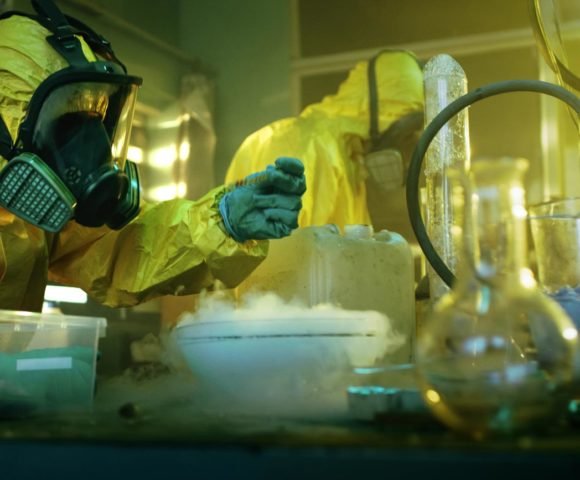


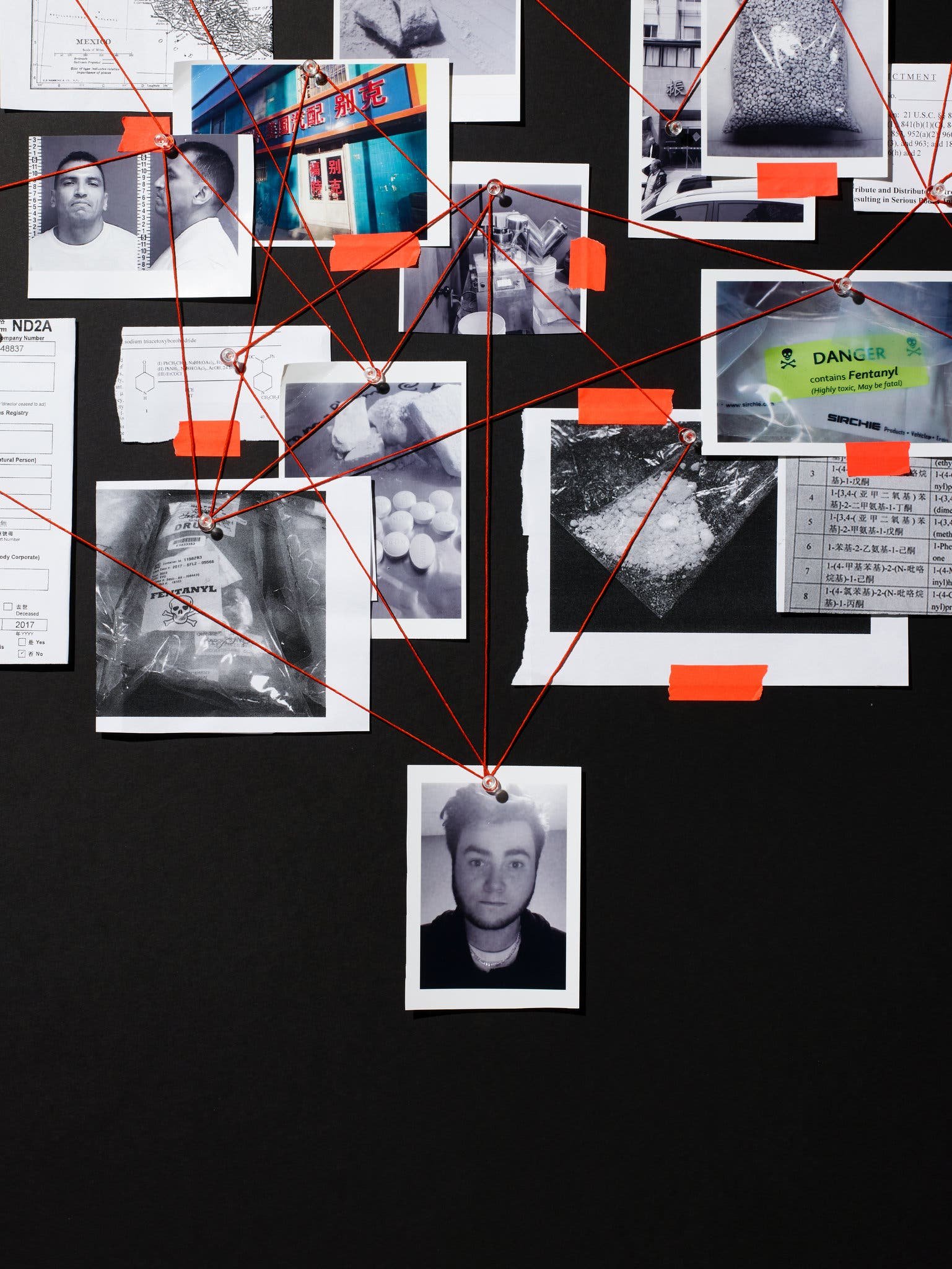






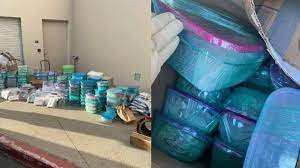
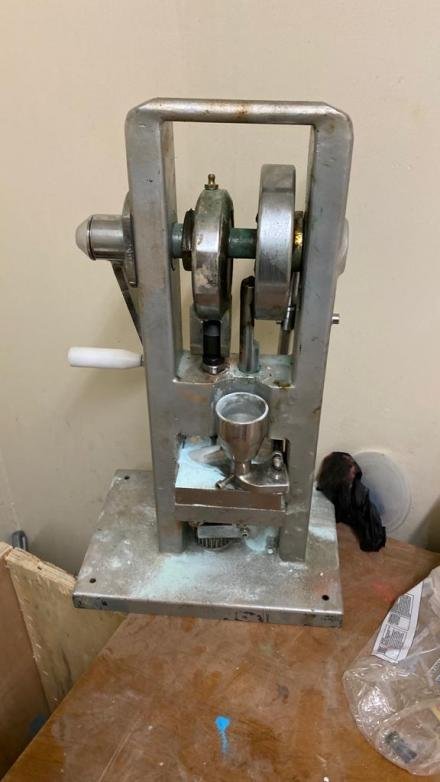

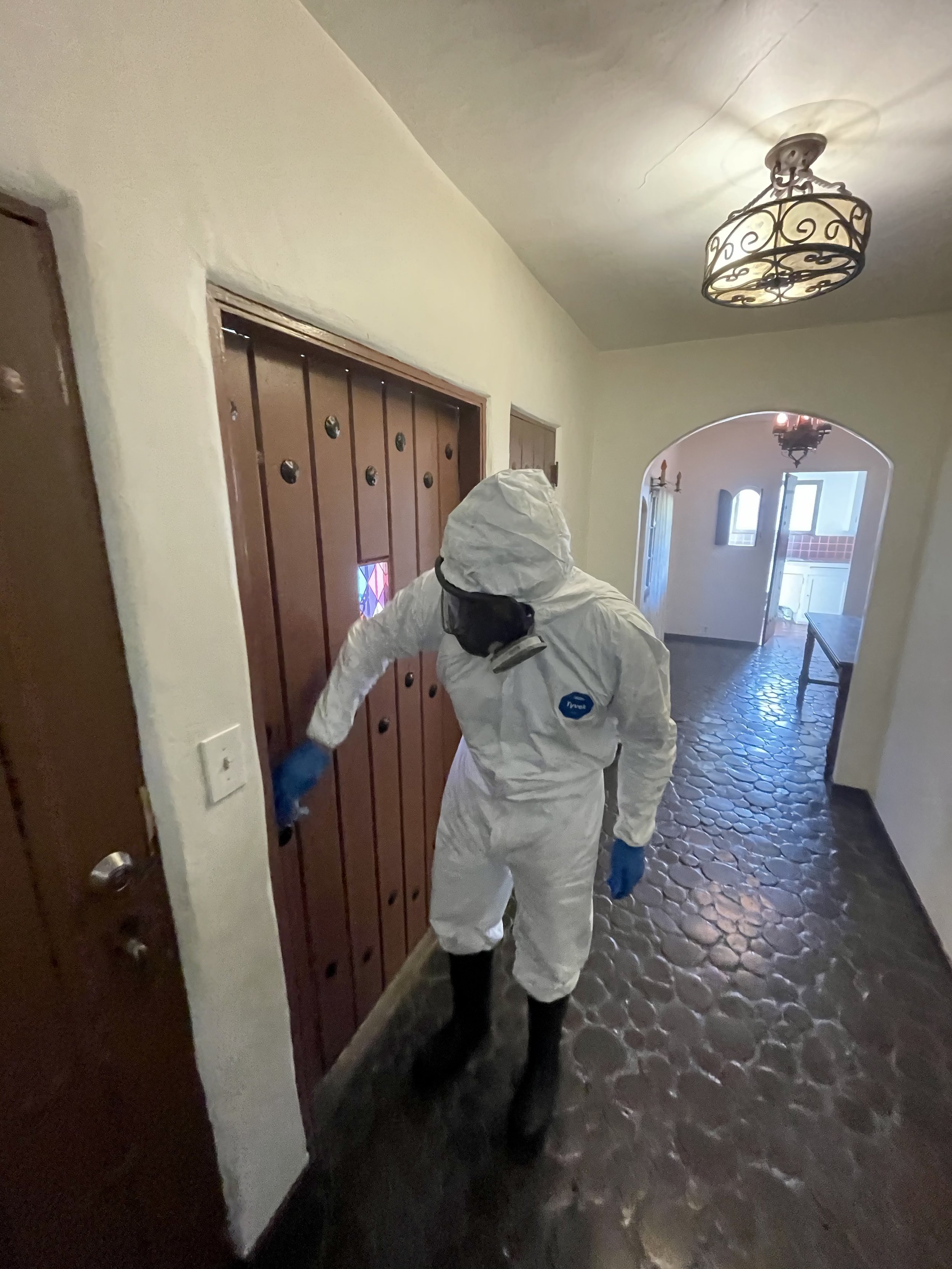






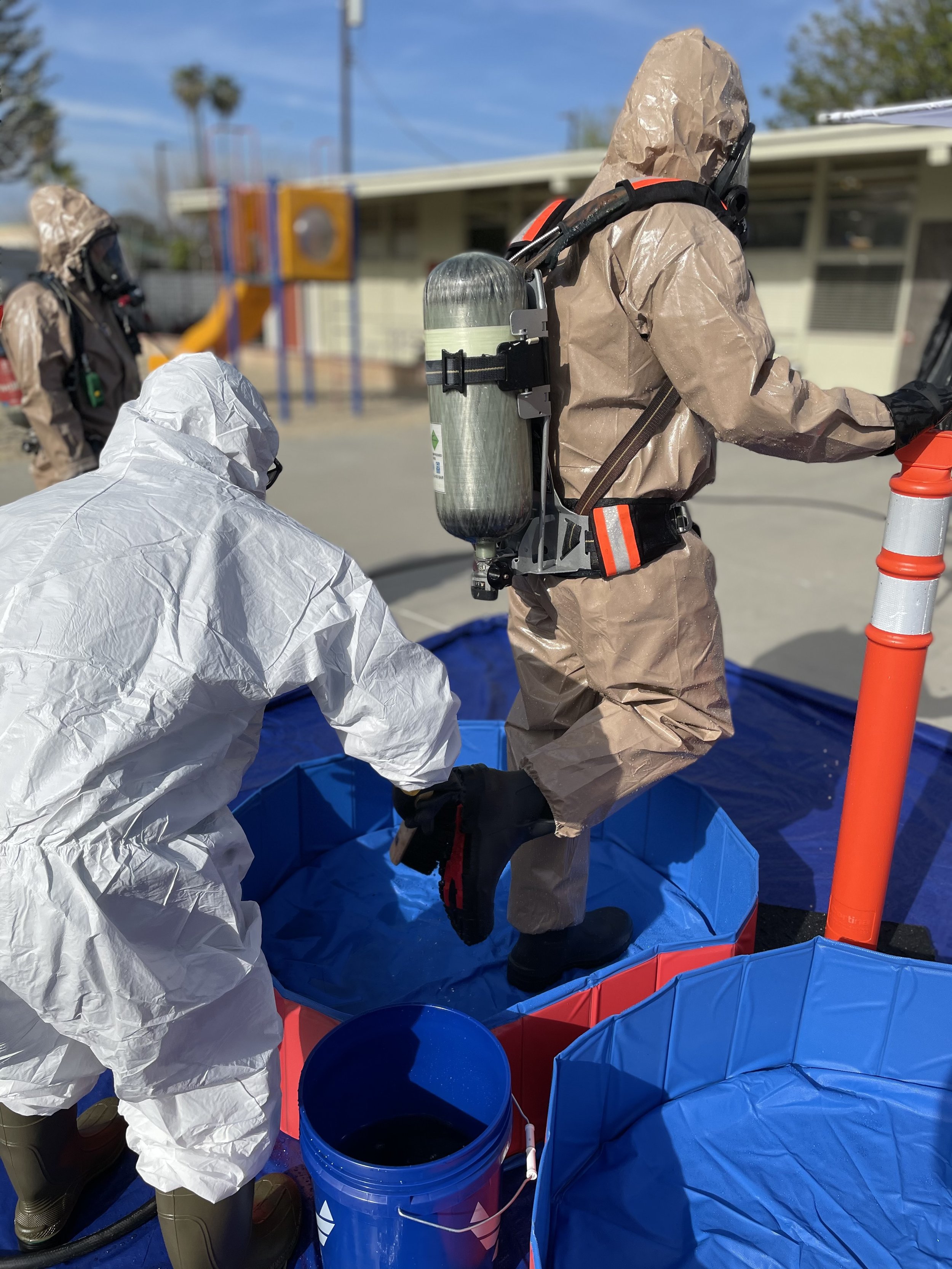









The 2025 Southern California wildfires left many buildings contaminated by toxic smoke, even those far from burn zones. Readers will learn about the dangers of wildfire smoke, which contains hazardous particles like heavy metals, asbestos, VOCs, and carcinogens, posing serious health risks and causing structural damage. The article explains how smoke affects health, damages property, and outlines the steps needed for professional remediation to restore safety.